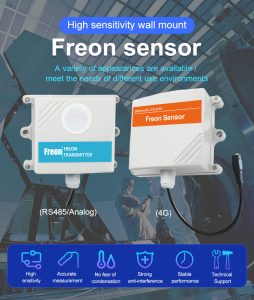Air pollution is a global issue that poses significant risks to human health and the environment. It has been linked to various respiratory and cardiovascular diseases, as well as climate change. As urbanization and industrialization continue to accelerate, it becomes crucial to adopt smart and efficient approaches to monitor and control air quality. In this regard, gas sensors have emerged as a valuable tool in detecting and quantifying air pollutants. This article explores the use of gas sensors as a smart approach to air quality control, highlighting their functions, applications, benefits, challenges, and future prospects.

Functions of Gas Sensors
Gas sensors are devices designed to detect and measure the concentration of specific gases in the atmosphere. They employ various technologies such as electrochemical, optical, and semiconductor-based techniques to convert gas concentrations into measurable electrical signals. These signals are then analyzed to determine the levels of pollutants present in the air. Gas sensors can detect a wide range of pollutants, including carbon monoxide (CO), nitrogen dioxide (NO2), sulfur dioxide (SO2), ozone (O3), and volatile organic compounds (VOCs).
Applications of Gas Sensors
Gas sensors find extensive applications in several domains related to air quality control:
Environmental Monitoring: Gas sensors are integral to environmental monitoring systems used to assess air quality in both urban and rural areas. They enable the identification of pollution sources, evaluation of pollution levels, and the effectiveness of control measures. Real-time, continuous monitoring helps identify potential risks to the environment and human health.
Industrial Emissions Control: Industries are major contributors to air pollution due to their emissions of harmful gases and particulate matter. Gas sensors play a crucial role in monitoring and controlling industrial emissions, ensuring compliance with environmental regulations. By providing accurate data on pollutant concentrations, industries can implement targeted mitigation strategies, reducing their environmental impact.
Indoor Air Quality: Indoor air quality is equally important for human health, as people spend a significant portion of their time indoors. Gas sensors can detect pollutants such as CO2, VOCs, and formaldehyde, which can originate from building materials, cleaning products, and human activities. Continuous monitoring of indoor air quality allows for timely interventions to improve ventilation and reduce pollutant levels.
Urban Traffic Management: Vehicle emissions are a major source of urban air pollution. Gas sensors installed in strategic locations can measure pollutants emitted by vehicles, such as nitrogen oxides (NOx) and particulate matter. This data can aid in traffic management strategies, including the development of low-emission zones, efficient routing systems, and promoting electric vehicle adoption.
Benefits of Gas Sensors
Gas sensors offer several advantages in air quality control:
Real-Time Monitoring: Gas sensors provide real-time data on pollutant concentrations, enabling prompt identification and response to air quality events. This allows for quick implementation of necessary interventions to protect public health and minimize environmental damage.
Accuracy and Precision: Gas sensors are designed to provide accurate measurements of pollutant levels, ensuring reliable data for decision-making. Technological advancements have improved the accuracy and sensitivity of gas sensors, enabling precise monitoring and control of air quality.
Cost-Effectiveness: Gas sensors offer a cost-effective solution for air quality monitoring compared to traditional methods. They are relatively affordable, easy to install, and require minimal maintenance. Additionally, their small size and portability allow for flexible deployment in various monitoring scenarios.
Integration with IoT and Data Platforms: Gas sensors can be integrated with the Internet of Things (IoT) and data platforms, allowing for seamless data collection, analysis, and visualization. This integration enables the development of comprehensive air quality management systems and facilitates data-driven decision-making processes.

Challenges and Future Perspectives
While gas sensors have numerous benefits, they also face certain challenges:
Calibration and Maintenance: Regular calibration and maintenance are crucial to maintaining the accuracy and reliability of gas sensor readings. Calibration ensures that sensors provide consistent measurements over time, and maintenance helps identify and rectify any issues or drift in sensor performance.
Sensor Validation and Data Quality Assurance: Ensuring the validity and quality of sensor data is essential. Validation processes should be implemented to verify gas sensor accuracy against reference instruments and standard measurement protocols. Data quality assurance protocols, including data validation
 : +86 155 8830 2704
: +86 155 8830 2704 : jxdziot@gmail.com
: jxdziot@gmail.com
